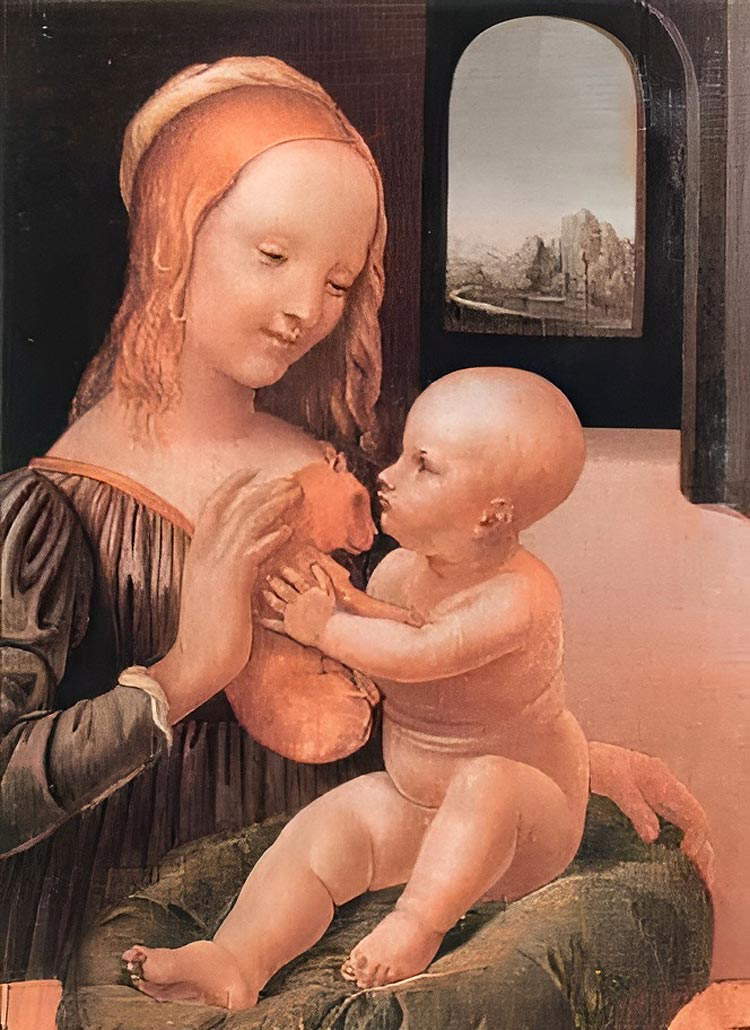Brief history of the artist who gulled the fascists with a fake Madonna by Leonardo da Vinci
The story of the Madonna del Gatto is a curious affair that took place in Milan in 1939, during the exhibition dedicated to Leonardo da Vinci in the Palazzo dell’Arte in Parco Sempione. Cesare Tubino (Genoa, 1899 - Turin, 1990), an artist who opposed the official art dynamics of the fascist regime, decided to challenge the art world of the time and create a fake painting in the style of Leonardo.
The panel he created depicted the Madonna of the Cat, a subject that had been conceived by the great master in the late 15th century and had been passed down through some of his drawings. The fake painting was skillfully aged by Tubino and then entrusted to antiquarian Carlo Noya, who, pretending to have discovered it by pure chance in his family home in Savona, managed to have it accepted as authentic by the curators of the Leonardo exhibition.
The artwork was declared authentic by Adolfo Venturi, a noted art historian, and other experts in the field. News of the painting’s discovery spread quickly in international newspapers, and the work was displayed at the Leonardo exhibition in Milan. However, some people were suspicious about its authenticity, and the painting was temporarily withdrawn from the exhibition. After several favorable analyses by the Ministry of Popular Culture, the work was reinstated in the exhibition.

After the end of the exhibition, the panel was returned to Carlo Noya, who was in charge of properly conserving it. However, traces of the painting were lost for a full 51 years, until Cesare Tubino’s death in 1990, when he admitted in his will that he was the one who made the forgery and that it had been stored preciously in his bedroom for half a century.
The news that emerged from Tubino’s will had great resonance in the national and international press, and aroused the interest of several art experts, including Giulio Carlo Argan, Maurizio Calvesi and Federico Zeri. These critics were not surprised by Tubino’s curious revelation, since, according to them, the work had numerous inconsistencies that made it incompatible with Leonardo da Vinci’s style.
The story of the Madonna del Gatto and the figure of Cesare Tubino demonstrate how art, culture, and creativity can be used as tools of resistance against dictatorships and authoritarian ideologies. At a time when art and culture were strongly controlled by the fascist regime, Cesare Tubino demonstrated that there is always room for creative rebellion and that the truth is not always what is presented to us. His figure represents an example of courage and freedom of thought that resisted the regime’s cultural propaganda, showing that even in a context of censorship and control it is possible to defend one’s freedom and creativity. But this story takes on even greater value in light of the sacrifice of one of Tubino’s sons, Libero, who fell in 1943 as a partisan and was decorated with the “Medal of Freedom” by the U.S. War Department.
Warning: the translation into English of the original Italian article was created using automatic tools. We undertake to review all articles, but we do not guarantee the total absence of inaccuracies in the translation due to the program. You can find the original by clicking on the ITA button. If you find any mistake,please contact us.





























